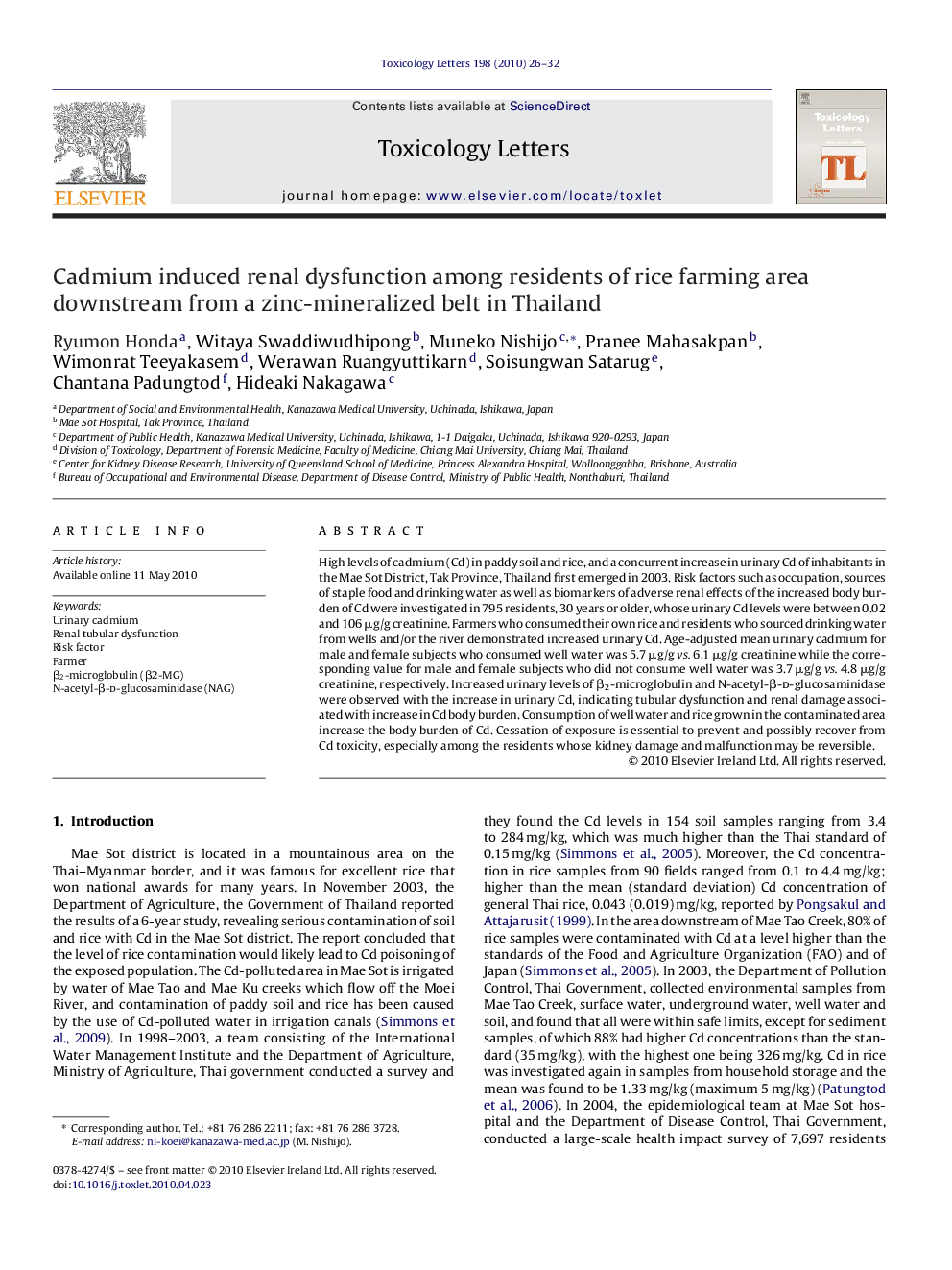| Article ID | Journal | Published Year | Pages | File Type |
|---|---|---|---|---|
| 2600100 | Toxicology Letters | 2010 | 7 Pages |
High levels of cadmium (Cd) in paddy soil and rice, and a concurrent increase in urinary Cd of inhabitants in the Mae Sot District, Tak Province, Thailand first emerged in 2003. Risk factors such as occupation, sources of staple food and drinking water as well as biomarkers of adverse renal effects of the increased body burden of Cd were investigated in 795 residents, 30 years or older, whose urinary Cd levels were between 0.02 and 106 μg/g creatinine. Farmers who consumed their own rice and residents who sourced drinking water from wells and/or the river demonstrated increased urinary Cd. Age-adjusted mean urinary cadmium for male and female subjects who consumed well water was 5.7 μg/g vs. 6.1 μg/g creatinine while the corresponding value for male and female subjects who did not consume well water was 3.7 μg/g vs. 4.8 μg/g creatinine, respectively. Increased urinary levels of β2-microglobulin and N-acetyl-β-d-glucosaminidase were observed with the increase in urinary Cd, indicating tubular dysfunction and renal damage associated with increase in Cd body burden. Consumption of well water and rice grown in the contaminated area increase the body burden of Cd. Cessation of exposure is essential to prevent and possibly recover from Cd toxicity, especially among the residents whose kidney damage and malfunction may be reversible.
